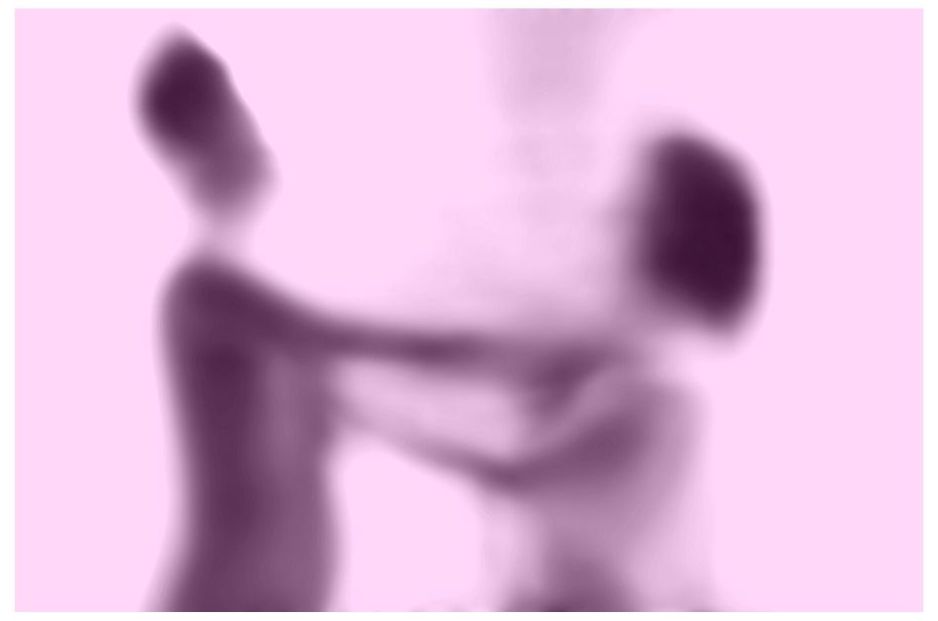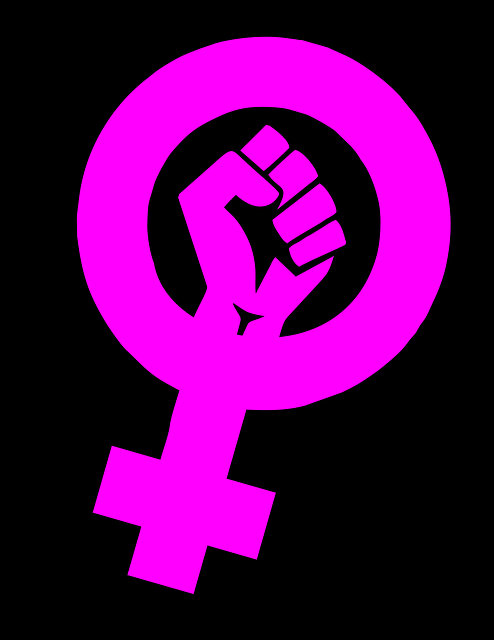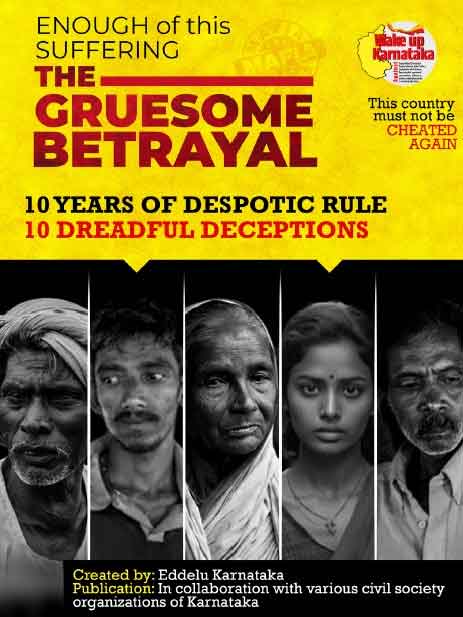How the conservative patriarchal Family Ideology operates and is challenged in the courts

The data from the NCRB shows that increasingly a large number of women are approaching the courts with the complaints of domestic violence every year. In 2018, around 1,03,272 cases were filed, in 2019, again 1,25,298 cases and in 2020, around 1,11,549 cases were under section 498A IPC. These women are approaching the legal system as the agents of change with the hope that they will no longer be abused. Complainants do not see their violent husbands as pati-parmeshwars, lords or masters, but are expecting men to be their partners. The new generation of women view marriage as a companionship. They are simply demanding violence free homes. This changing aspirations among young women is also reflected in some of the recent movies such as the `Darlings’, `Secret Superstar’, `Thappad’, so on.
However, on the other side, neither the violent men, nor the male-dominated courts, nor the patriarchal society as the up keepers and the preservers of patriarchy are willing to come out of their traditional age-old patriarchal mindset. The rigid conservative attitude of the courts is evident from the recent remark made by a woman judge from the Delhi High court who hailed Manusmriti and preached about family ideology rather than endorsing the constitutional values. Also, from the analysis of the spate of judgements, it is observed that the courts promote `familyism and not feminism’. The patriarchal logic in such decisions paint complainants as `disgruntled women’, liars, `gold diggers’ and so on ignoring the fact that the law is clearly being made with the intent to protect the rights of the victims and survivors and that violence in marriage is not a `men versus women’ issue. The top-down approach of the courts failed to uphold the constitutional values or the aspirations of the new generation of women.
While examining these vast contradictions or the `clash of ideologies’ that operates on daily basis in the courtrooms, this piece of work observes that in the 21st century, a vast difference exists between the way women on grounds are dealing with the realities of domestic abuse, the way the domestic violence laws exist on paper, and the top-down approach taken by the courts while implementing the laws. This work, while referring to the patriarchal attitude highlights that an `insecurity’ prevails in the male-controlled society that is fearful of new generation of women who are demanding violence free homes, see marriage as a partnership and expect men to not to be the companions and not the chauvinist lords. It suggests that the courts as the custodian of rule of law need to uphold constitutional values and need to restrain from imposing the conservative ideology, to accept the changing socio-economic realities to shatter the shackles of conservatism[1]. However, this is not happening. Yet, despite of facing huge challenges[2], women, today, are showing the path of transformation by refuting patriarchy[3] and countering the age-old traditions.
Hail Manusmriti Hail Patriarchy: The Courts and the Conservatism
On 10 August 2022[4], while India has been preparing to celebrate 76th Independence Day, Justice Prathiba M Singh, a Delhi High Court judge, in a conference organized by the Federation of Indian Chambers of Commerce and Industry (FICCI) on the subject of `Facing the unseen barriers: Addressing challenges faced by women in science, technology, entrepreneurship and mathematics (STEM) said that “Indian women are a blessed lot since Indian culture and scriptures like Manusmirti give a very respectable position to women”. Manusmriti is code of law propounded two thousand years back that codifies social stratification, consecrates segregation and reinforces a discriminatory ideology[5] that propagate social, economic and gender inequality based on birth. She further stated, “Sharing is caring, we do not need to be selfish to say ‘I need my time, I need this.’ You can be a little more adjusting and compromising, but the benefits of a joint family system are far more than what in a nuclear family”. These remarks, of hailing Manusmriti draw severe disapproval and have been critiqued[6] by several activists, academicians, scholars, civil society[7] organizations and by the social media. It is stated that this approach is scary, patriarchal, legitimize conservative norms, institutionalize gender roles[8], and goes against the grain of constitutional values.
However, this is not the first time that the judges have uphold the conservative patriarchal notions that puts women down at the lower pedestal while hailing `familyism and not feminism’. In several other cases, over the years, the male-dominated courts have utilized a mesh of family ideology[9] and traditional values filtered through the prism of law. These anti-women decisions have hailed men as masters and lords in the marriage whereas women are considered as second-class citizens despite the constitutional guarantees. Range of subjective biases, and idiosyncratic styles are utilized to decide good or bad, right or wrong and perfect or imperfect to judge women while no such filter are used to judge men as husbands. For instance, a court[10] in Kerala noted, “A wife should be administrator in purpose, slave in duty, Lakshmi in appearance, Earth in patience, Mother in love, Prostitute in bed”, while quoting a Sanskrit shloka to interpret the duties of a woman in a matrimonial relationship, but for men no such prescribed duties could be found in the scriptures perhaps.
Marriage itself is considered to be a pious `Dharmic[11]’ institution `made in heaven but broken on earth’[12] and not a partnership or a companionship. The patrilineal and patrilocal arrangements determine the ownership of women by men. The courts have refused to apply constitutional values in the domain of family. For instance, the Delhi High Court in Harvinder Kaur v Harminder Singh Choudhary[13] has held that the “Introduction of constitutional law in the home is most inappropriate. It is like introducing a bull in a China shop. It will prove to be a ruthless destroyer of the marriage institution and all that it stands for. In the privacy of the home and the married life neither Article 21 nor Article 14 have any place. In a sensitive sphere, which is at once most intimate and delicate the introduction of the cold principles of constitutional law will have the effect of weakening the marriage bond”. Ironically, the court is concerned about preserving the marriage but not about the violence women face in marriage. Also, those personal laws that are against the spirit of `personal is political’ are used to adjudicate the family matters relating to marriage, divorce, adoption and inheritance.
Moreover, the laws relating to dowry or domestic violence have been enacted under pressure by the women’s movement, however, the state is not keen to preserve women’s rights as indicated in numerous stances where the cases have been decided to grant an immunity to the violent husband. Wife battering is upheld in the garb of discipline rather than considering it as a criminal conduct by a violent man. For instance, there are cases when the courts opined that in case a wife is forgetful or is `devoid of etiquettes and courtesy’, her husband has a right to chastise her[14]. Similarly, in another case, the court held that as “the wife is not performing her pious obligation[15], and therefore is subjecting her husband to cruelty. In yet another case, divorce is granted because the wife “taunted the husband[16] for not being able to satiate her sexual desires on account of his being heavy weight”. In Suman Kapur v Sudhir Kapur[17], the husband was granted the decree of divorce because the court felt that wife’s unwillingness to have a child is a cruel behavior. Frequently, human subjectivities pour in while interpreting the facts and circumstances of the case and any grievance is viewed as man versus a woman’s issue rather than the systemic oppression of women.
In Christine Lazarus Menezes v Lazarus Peter Menezes[18] it was observed that lodging false case under Section 498A by the wife is cruelty against the husband and he can seek divorce on this ground. The Gujarat High Court in Natubhai Somabhai Rohit v State of Gujarat[19] quashed the FIR on the ground that it is registered against ten members of the family and even earlier the complainant has filed a complaint under PWDVA wherein she has roped in all family members which shows her tendency to indulge into allegations without trying the case or examining the role of those family members who committed the act of violence.
The Supreme Court in Arnesh Kumar v State of Bihar[20] referred to victims of domestic violence as `disgruntled women’ while wrongly assuming that women file false complaints and in Rajesh Kumar v State of UP[21] the court went on to make guidelines to ascertain the veracity of complaints thus dubbing complainants as liars. However, after protest by several women’s organizations[22] and petitions filed in the Supreme Court, in Social Action Forum for Manav Adhikar v Union of India[23] the order of formulating Family Welfare committees was done away with while retaining the provisions relating to arrest and bail. Even in cases where women have been burned alive or have been compelled to commit suicide, the courts frequently, while sympathizing with the accused men ignore the brutalities committed on women. For instance, in the well-known Naina Sahani Tandoor Murder case[24], the apex court commuted the death sentence to life imprisonment “because murder was the outcome of strained personal relationship. It was not an offence against the society”.
The relationship matrix is utilized to adjudicate the women’s claims. For instance, in S. Hanumantha Rao v S Ramani[25], the wife’s unwillingness to wear mangalsutra to be treated as an evidence of mental cruelty. In Bhaskar Das v Renu Das[26], the Gauhati HC held that refusal to wearing a sindoor by a Hindu wife tantamount to cruelty on the basis of which a husband may obtain divorce. The courts, thus, uphold the conservative morality while limiting the autonomy of a woman. The courts decide a woman’s place in a society, control her body and mind, regulate her being, her interaction and her relationships including what she should wear. Custodial torture within the four walls of the home is neglected for the sake of upholding the tradition. While propagating the family ideology, in Narendra v K Meena[27] the court held that separating a husband from his family amounts to `cruelty’ without recognizing the fact that a girl too is separated from her natal family at the time of marriage. The court upheld conservative notions while reinterpreting hegemonic understanding of Hinduism[28]. The courts construct an image of an ideal stereotype of a good wife who is subservient, submissive and perfect. No such ideals of perfect men or good husbands are proposed.
Women as citizens when interact with the legal system, they are invoking their rights as granted to them by the laws with the hope that their situational crisis is resolved fairly. However, this does not happen easily. The complainants face hostility in navigating both the social as well as the legal terrains. The voices of women frequently remain unheard. Perhaps, women are being detested for challenging the authority. Instead of using the language of rights to promote justice, the law is diverted to pit one group against the another. The law, therefore, is not utilized as a tool to challenge domination, rather it is deployed to deepen the sex-based inequalities and to reproduce gender hierarchies. MacKinnon[29] argued that society as a whole and its constitutive parts including law, institutions and private relations are hierarchically organized on the basis of sex and are designed to create and maintain male dominance. This work suggests that biased attitude continue to operate in the courts, and women are routinely infantilized.
Fragile Masculinity of the Androcentric Courts
The courts comprised mostly of men as judges, lawyers and court staff, uses masculine lens to filter the complaints of women. The fragility of masculinity is often displayed in cases relating to men-women relationship. For instance, in X versus Y[30], the husband filed a defamation suit against the wife because in her pleadings, she used the word `impotent’. The Magistrate issued process which was challenged by the wife in the High Court. The High Court observed the use of such word constitutes the offence of criminal defamation and upheld that “prima facie the word “impotent” when understood in it’s plain and grammatical sense, reflects adversely upon the manhood of a person and has a tendency to invite derisive opinions about such person from others”. Perhaps, the fragile ego got injured because of the use of one word which is construed as an injury to the `manhood’. The court overlooked the fact that in the country where litigants are hardly aware of the technicalities of law, holding a woman guilty, hardly serves any purpose.
Strict norms are used to measure women’s character and her behaviour. For instance, the Allahabad High Court in Smt Neelam v Ram Asrey[31] held that, “Thus, the crux of the matter is that even Supreme Court has approved DNA Test as the most legitimate and scientifically perfect means, which the husband could use, to establish his assertion of infidelity. This should simultaneously be taken as the most authentic, rightful and correct means also with the wife, for her to rebut the assertions made by the respondent husband, and to establish that she was not been unfaithful, adulterous or disloyal”. The court opined that the wife should undergo the DNA Test to prove that she is not disloyal, unfaithful or adulterous. Poignantly, no court has dwelt on how a man should prove his loyalty or faithfulness.
The system instead of facilitating the access to justice is interpreting the affirmative law in an adverse manner. As the implementers of the rule of law, the courts are dutybound to apply constitutional provisions. But the stereotypes and the myths are frequently reflected in the verdicts. Perhaps, the issue of domestic violence is seen as a man versus a woman case rather than as systemic oppression of women. Also, the courts have failed to draw a distinction between the serious violence and the disputes. The social and structural context, the spatial location, the power relationship, the controlling behavior, are different factors that govern any relationship. However, the law is being manipulated to use the `misogynist filter’ to legitimize the prejudices. The process of `patriarchal manipulation’ is negating the complaints of women while sanctioning the patriarchal values leading to the situation of the `misogynist injustice’[32].
The violent men, the male-dominated courts and the patriarchal society, all of whom may be categorized as the up keepers and the preservers of patriarchy, in the garb of traditions, cultures and sanskaars act to preserve the conservative patriarchal norms because such noxious environment benefits them, nurture the false male ego and helps to maintain and reinforce the toxic masculine culture. Whereas the women with the progressive imaginations, who raise their voice against violence strive to create a democratic non-violent environment at home and in society. They are taking up a stand against violence in matrimony, are making a dent on rigid and rabid patriarchy. They refused to accept what is refuted as `normal’ and engage with the authority. What they demanded is not the pity or sympathy but their right to lead a violence free dignified life. As the agents of change, they negotiate around the patriarchal strictures and even in the most restricted environment made efforts to resist violence.
Women are no longer seeking Lords and Masters
Maya Angelou noted, “Each time a woman stands up for herself, without knowing it possibly, without claiming it, she stands up for all women”[33]. General perception is that those who face domestic abuse are either `helpless victims’ (bechari) or are shrewd `disgruntled women’ who file cases for personal vendetta. Gordon opposed the paradigm of the `woman as a victim’[34] and opined that it is false to assume that women are powerless. In the perilous life situations, with no resources and with little support, women exhibit agency and portrayed extra-ordinary courage to defy traditional norms.
On 5 August 2022, a movie titled `Darlings’ is released that portrays the complexities[35] of the situation of domestic violence, the ambivalent role of the police and the way women are struggling to deal with their abusive husbands. When scholars have observed a gender bias in portrayal of women in the Bollywood movies[36], this is a latest addition to the list of similar movies such as `Thappad’, `Secret Superstar’, `Saat Khoon Maaf’, `Queen’, `Provoked’, `Khoon Bhari Maang’. Away from the stereotypical image of women as Sita or Savitri as propagated by the conservative ideology, these set of movies illustrate the changing aspirations and desires of young generation women to shatter the stereotypical ideas of seeing husbands as Lords or Masters.
The contents depicted in these movies are not very different from the existing ground realities. Women are facing abuse[37] within the homes in various form and are dealing with it in different ways. An analysis of the NCRB data suggests that a number of complainants are approaching the courts every year with the complaints under Section 498A IPC, Dowry Prohibition Act and other legal provisions despite the fact that conviction rate remains low. The journey to justice is not easy[38]. Also, not all women who face violence approach the court. The National Family Health Survey-3,[39] 2005-06, reveals that 54 percent women and 51 percent men agree that it is justifiable for a husband to beat his wife. The survey indicates that two out of every five women in the age group of 15 to 49 years reported having faced one or the other form of violence in their lifetime. Another study reported that merely 1 out of 1000 victims air their grievances[40]. Yet, those who are questioning the violence in marriage, through their sheer grit are breaking the codes of silence to reclaim ownership of their lives and in the process, shaking the system forcing it to respond. This depicts the transformation in the attitude of women.
The clash of ideologies in the courtrooms
On the one hand, when the legal system revictimizes the complainants, yet, women are using law as a platform to reclaim their right to life with dignity and to resist violence in homes. The courts compel women to `adjust’ in the violent relationship without the guarantee of safety or security. The male-dominated legal system including the police and the courts, perhaps, have failed to accept the reality that women today are seeking partners or allies and not the lords, or swamis[41] (as also expressed by Kamla Bhasin, a noted feminist). Also, the patriarchal society which put men on higher pedestal has failed to keep pace with the changing aspirations among women.
Those women who are finding courage to register their complaints are negotiating for their rights and contesting their claims to challenge stubborn patriarchy. These complainants are not experts in feminism but with little or no available support are seeking violence free life for self and their children. While rewriting their own stories of emancipation, they are altering the inegalitarian family structures to create democratic spaces. In seeking freedom from violence, women are demanding recognition and acknowledgement to their dignity. They are fighting long arduous battles not only against abusive men but also against the toxic patriarchy within homes, misogyny in the courts, androcentric cultures prevalent in communities and sexism in the society. In doing so, women are transforming the patriarchal culture that places abusive husbands on higher pedestal and demand men to be partners in marriage. But the abusive men, patriarchal society and the male-dominated courts have failed to keep pace with the changing aspirations of women and this leads to clash of ideologies that operate within the courtrooms. This also reflects on how an `insecurity’ prevails in the patriarchal society that is fearful of new generation of women who are demanding violence free homes, see marriage as a partnership and expect men to not be chauvinist lords but companions.
The courts should uphold the constitutional values
The role of the court is to protect, preserve and promote the constitutional values of equality, justice and liberty while eliminating engrained misogyny and sexism. It is desirable that the courts as custodian or the rules of law uphold the norms that support the agency and autonomy of women while smashing patriarchy. The courts also need to accept the changing socio-economic realities while shattering the shackles of conservatism.
Nancy Fraser[42] in the broader international law and gender context proposed the comprehensive trivalent dimensions of justice to conceptualize the economic, socio-cultural, and political (in)justice. The economic dimensions of (in)justice calls for reconsidering the existing maldistribution and suitable redistribution. At the socio-cultural level, the need is to overcome an androcentric culture that privileges masculinity and to recognize the status of women. The political dimension for gender justice calls for the better representation of women and their interest and to reconsider the questions pertaining to exclusion from the circles of entitlement to encompass for just `redistribution, recognition and representation’. While adapting a similar model, I suggest that the concept of justice be applied in its broader dimensions. The idea is to reconstruct the `idea of impartiality’ to assure that the claims are fairly assessed to counter the hegemonic domination of the privileged men. The need is to overcome not just the gender gap, but to overcome the power gap[43].
Law cannot remedy the human problems using the filters of the procedural technicalities, outdated ideologies or the patriarchal complexities while ignoring the concept of justice. Law needs aliveness, a purpose to expose hypocrisy, to reveal inconsistencies, to brings out the double standards, to contest domination, to challenge the status quo, and to aim towards social transformation. Any attempt to impose family ideology needs to be countered with the constitutional values. Wendy Brown[44] has insisted that sharing of power and not regulation, freedom not protection, is a true affirmation of democracy which may end marginalization of women within families. In other words, justice is a major concern and women cannot be deprived of the same. Women who are wronged have been challenging their violent husbands, are determined to seek justice and to alter the patriarchal ideologies. They are knocking the doors of the courts forcing the system to respond. And until, violence is eliminated, those oppressed will keep on challenging oppression while shaking the roots of patriarchy.
The courts need to accept the fact that women complaining against violence are seeking justice as citizens vested with rights and not as moral subjects. The courts are not khap panchayats to uphold customs and traditions. In no way, courts can impose outdated conservative ideology against the spirit of the constitution. The potential of law has to be strengthened by the accompanying socio-political struggle at broader level. Similarly, society has to transform and more importantly chauvinist men need to act as companion and not as pati-parmeshwars. This work suggests to strengthen the right based justice paradigm in relation to marriage. Robust, inclusive democracies can thrive when not only the access to justice is easy but also the system imparts justice fairly, fix the responsibilities of the abusers, and is free from myths or misogyny. Instead of fighting against 498A or other women-friendly laws, the need is to fight against domestic violence, and to eradicate all forms of violence against women and children.
[1] Nigam Shalu (2021) Domestic Violence law in India: Myths and Misogyny, Routledge, Delhi
[2] Nigam Shalu (2019) Women and Domestic Violence Law in India: A Quest for Justice, Routledge, Delhi
[3] Nigam Shalu (2019) We the women warriors, are unstoppable, 16 days blogathon against gender based violence campaign organized by UNSW, The University of Edinburg and DR BR Ambedkar University Delhi https://16daysblogathon.blog/2019/11/27/we-the-women-warriors-are-unstoppable/shalu-nigam/
[4] Suryam Shagun (2022) Indian Women are blessed; scriptures like Manusmriti gives a very respectable position to Indian women: Justice Prathibha M Singh, Bar and Bench August 11, https://www.barandbench.com/news/indian-women-blessed-scriptures-like-manusmriti-give-very-respectable-position-women-justice-prathiba-m-singh
[5] Ali Subashini (2020) The Law of Manu and What do they Mean for the citizens of the Hindu Rashtra, The Wire November 10 https://thewire.in/rights/manusmriti-hindu-rashtra-rss
[6] Scroll.in (2022) Manusmriti gave respectable position to Indian women says Delhi High Court Judge Prathibha M Singh, August 11, https://scroll.in/latest/1030286/manusmriti-gives-respectable-position-to-indian-women-says-delhi-hc-judge-prathiba-m-singh
[7] All India Lawyers Association for Justice (2022) Statement: Justice Prathibha Singh’s Comments on Manusmriti, August 11, https://ailaj.wordpress.com/2022/08/13/justice-prathiba-singhs-comments-on-manusmri/
[8] The Wire (2022) Indian scriptures like Manusmriti gave respectable position to women: Delhi HC Judge, August 11, https://thewire.in/women/indian-scriptures-manusmriti-women-respect-justice-prathiba-singh
[9] Nigam Shalu (2017) Is domestic violence a lesser crime? Countering the Backlash against Section 498A, CWDS, Occasional Paper No 61 CWDS New Delhi http://www.cwds.ac.in/wp-content/uploads/2017/01/Occasional-Paper-Shalu-61.pdf
[10] Quoted by the lower court in the matrimonial appeal 360/2013 decided on 1.8.18 in VV. Prabhakaran v Chandranath AIR 2018 Ker 179
[11] Prabhubhai Ranchhodbhai Tailor v Bhartiben Prabhubhai Tailor 004 (3) MhLJ 487, Shiva Mohana Reddy vs Aparna Reddy on 3.9.2004 Andhra HC
[12] Bajrang Gangadhar Revdekar vs Pooja Bajrang Revdekar on 18.8.2009 Bombay HC
[13] AIR 1984 Delhi 66
[14] Ramesh Kumar v State of Chhattisgarh
[15] Usharani Pradhan v Braj Kishore Pradhan, MAT No. 104 of 2011 High Court of Orissa, order dated 23.9.11
[16] SA v AA MAT Appeal 68/2012 decided on 22.3.2016, Delhi HC
[17] AIR 2009 SC 589
[18] Bombay HC Family Court Appeal No. 150/2008 decided on 21.4.17
[19] Cri Misc Application 20679/2013 decided on 6.4.17
[20] (2014) 8 SCC 273
[21] 2017 (8) SCALE 313
[22] The Invisible Lawyer (2018) Women to Supreme Court: We are Not Liars, Protest Against Dilution of Section 498A, The Lawyer’s Collective July 31, http://www.lawyerscollective.org/the-invisible-lawyer/women-supreme-court-not-liars accessed on 14.8.18
[23] Social Action Forum for Manav Adhikar v Union of India (2018) 10 SCC 443
[24] Sushil Sharma v State NCT of Delhi (2014) 4 SCC 317
[25] 1999 3 SC 620
[26] Bhaskar Das v Renu Das Mat Appeal 20/2019 Gauhati HC decided on 19.06.2020
[27] Narendra v. K Meena Civil Appeal No. 3253 of 2008 decided on October 6, 2016
[28] Kapur Ratna (2016) Hindu Divorce Case: Retrograde Gender Politics on the Bench, The Wire October 8
[29] MacKinnon CA. (1987) Feminism Unmodified: Discourses on Life and Law, Harvard University Press, London
[30] Criminal Application APL 774 of 2017 Bombay HC, Nagpur Branch decided on 2.11.2018 para 24
[31] Neelam v Ram Asrey Allahabad HC (Matters under Article 227) No. 7442 of 2019 https://www.livelaw.in/pdf_upload/pdf_upload-384656.pdf
[32] Nigam S (2021) Domestic Violence Law in India: Myths and Misogyny Routledge, Delhi
[33] Jones J (2007) When it Comes to Politics, Friendship has Its Limits, The New York Times, July 23
[34] Gordon Linda 1991 What’s New in the Women’s History? In A Reader in Feminist Knowledge ed Sneja Gunew Routledge, London
[35] Panchal Kumar RJ (2022) Director Jasmeet Reen deconstructs Alia Bhatt’s revenge Shefali Shah-Roshan Mathew love story in Darlings: Left it to people’s imagination, The Indian Express, August 14, https://indianexpress.com/article/entertainment/bollywood/darlings-director-jasmeet-reen-alia-bhatt-revenge-shefali-shah-roshan-mathew-love-story-8086867/
[36] Khadilkar Kunal, AR KhudaBukhush and Tom M Mitchell (2022) Gender Bias, Social Bias, and representation in Bollywood and Hollywood, Patterns 3(4) https://doi.org/10.1016/j.patter.2021.100409
[37] NFHS 3 (2007) Domestic Violence, http://rchiips.org/nfhs/NFHS-3%20Data/VOL-1/Chapter%2015%20-%20Domestic%20Violence%20(468K).pdf
[38] Nigam Shalu (2005) Understanding Justice Delivery Mechanism from the Perspective of women litigants, CWDS Occasional Paper No. 35 CWDS New Delhi
[39] NFHS 3 (2007) Domestic Violence, http://rchiips.org/nfhs/NFHS-3%20Data/VOL-1/Chapter%2015%20-%20Domestic%20Violence%20(468K).pdf
[40] Centre for Social Research (2005) Section 498 A IPC: Used or Misused?, Delhi
[41] Bhasin Kamla (2016) Tedx talk on Patriarchy dehumanizes men https://www.youtube.com/watch?v=TXXVfGAzcYw&ab_channel=TEDxTalks
[42] Fraser Nancy (1990) Struggle over Needs: Outline of Socialist Feminist Critical Theory in Women State and the Welfare Edited by Linda Gordon, Madison: University of Wisconsin Press p. 213-215
[43] UN (2020) UN75: 2020 and Beyond: Closing the Gender Gap https://www.un.org/en/un75/women_girls_closing_gender_gap
[44] Brown Wendy (1995) States of Injury: Power and Freedom in Late Modernity, Princeton University Press, NJ, USA
The author is an advocate, researcher and an activist working at the intersection of women’s rights and human rights. The views expressed here are based on author’s interaction with the women litigants and have been published earlier in her book titled `Women and Domestic Violence Law in India: A Quest for Justice’ (2019). Her recent work also includes `Domestic Violence Law in India: Myths and Misogyny (2021).















































